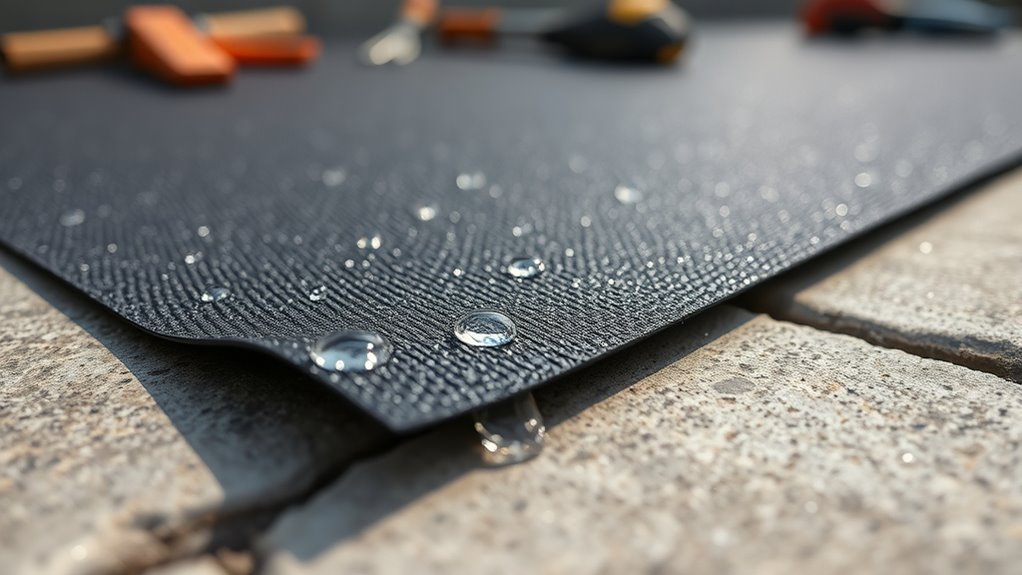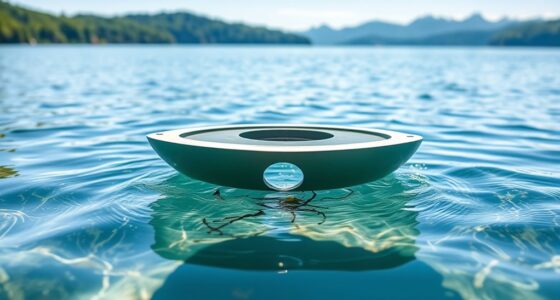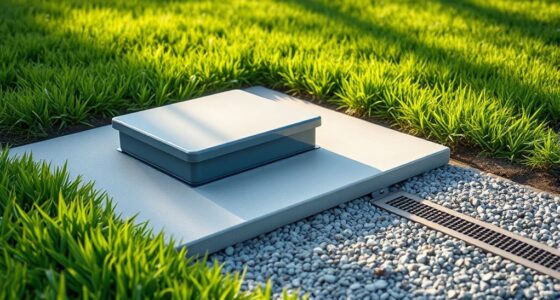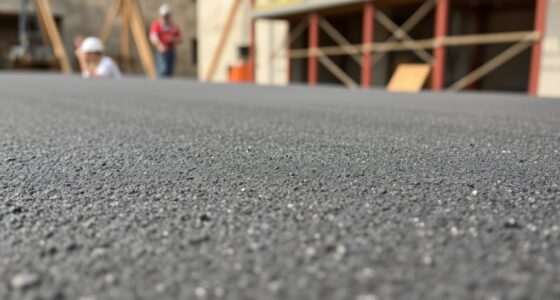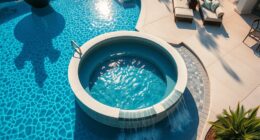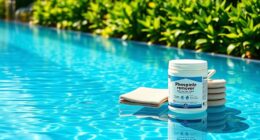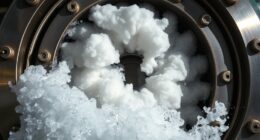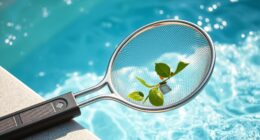Waterproofing membranes act as a vital barrier to prevent water seepage into your property’s foundation, walls, or roof. Choosing the right type—like bituminous, PVC, or liquid-applied—depends on your structure and exposure conditions. Proper installation is key; make certain surfaces are clean, seams are sealed, and manufacturer guidelines are followed. Investing in quality membranes not only protects your property now but also saves you money in the long run. Keep exploring to discover how to optimize your waterproofing system effectively.
Key Takeaways
- Proper surface preparation ensures effective adhesion and prevents future seepage issues.
- Selecting the right membrane type based on structure and environmental conditions enhances waterproofing performance.
- Seam sealing and overlaps are critical to prevent water infiltration at joints and penetrations.
- Regular inspection and maintenance help identify and address potential leaks early.
- Using high-quality membranes with UV, chemical, and temperature resistance extends durability and effectiveness.
How Waterproofing Membranes Protect Your Property
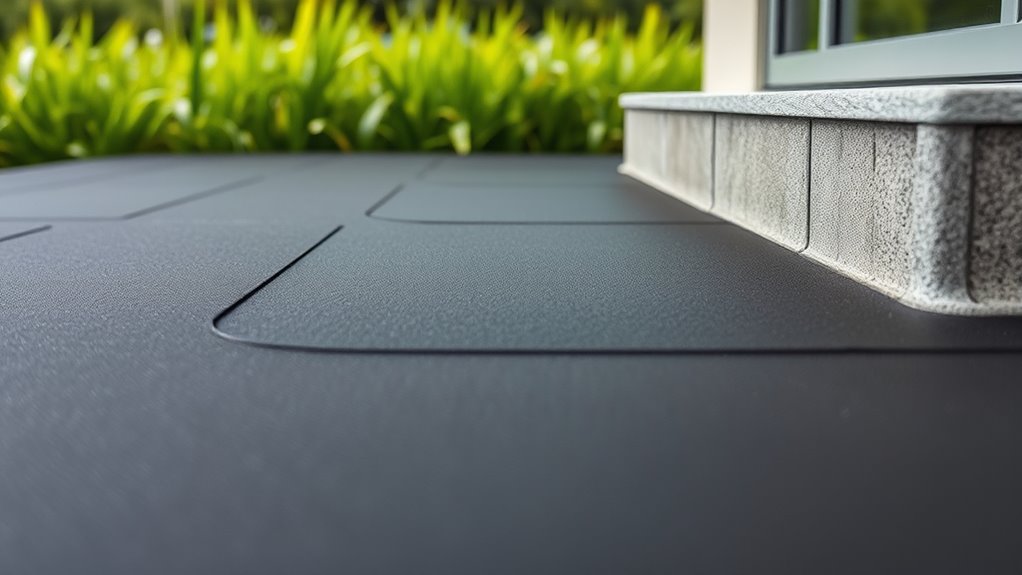
Waterproofing membranes play a crucial role in safeguarding your property from water damage. They create a barrier that prevents water from penetrating your building’s foundation, walls, or roof. By acting as a shield, these membranes stop leaks before they can develop into costly problems like mold, rot, or structural weakening. Proper application guarantees that water stays outside where it belongs, especially during heavy rain or flooding. This protection helps maintain your property’s integrity and prolongs its lifespan. Waterproofing membranes also reduce maintenance costs by preventing moisture buildup that can lead to internal damage. When correctly installed, they provide peace of mind, knowing your property is shielded from the damaging effects of water infiltration, ensuring your investment stays safe and durable over time. Online resources available for real-time updates can assist in ensuring correct installation and ongoing maintenance.
Types of Waterproofing Membranes and Their Uses
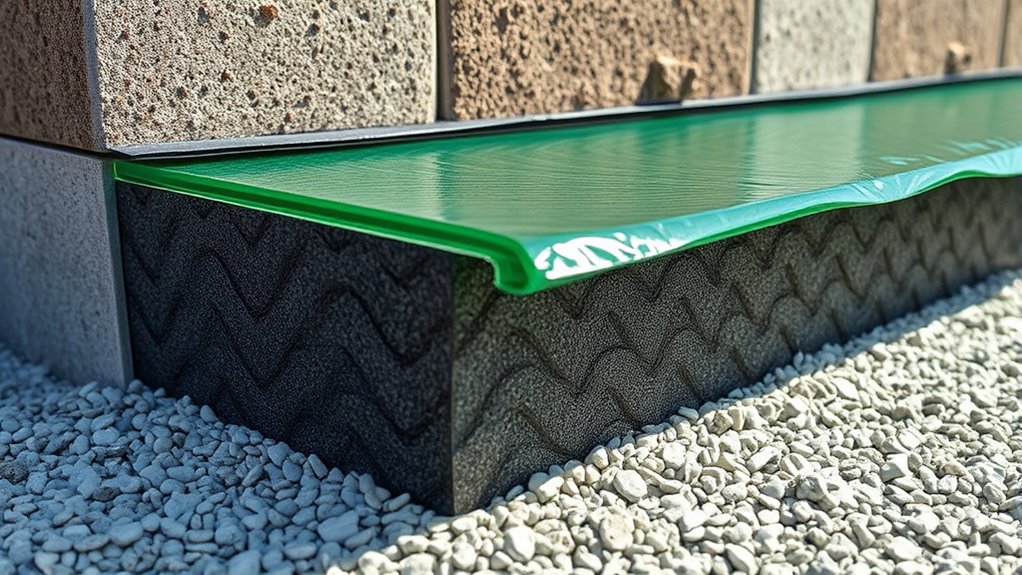
Choosing the right type of waterproofing membrane depends on your specific project needs and the area you’re protecting. Bituminous membranes are versatile and ideal for underground or foundation walls, offering durability and resistance to moisture. PVC membranes are flexible, lightweight, and perfect for roofs or areas with movement, providing long-lasting protection. EPDM membranes are known for their elasticity and are suitable for large flat roofs and pond linings. TPO membranes combine the benefits of PVC and EPDM, making them popular for commercial roofing. Liquid-applied membranes create seamless coatings and are excellent for complex shapes or patches. Each type serves different purposes, so consider factors like exposure, flexibility, and durability when choosing the best waterproofing membrane for your project. Understanding the various types of membranes can help you make an informed decision tailored to your specific application.
Factors to Consider When Choosing a Waterproofing Solution
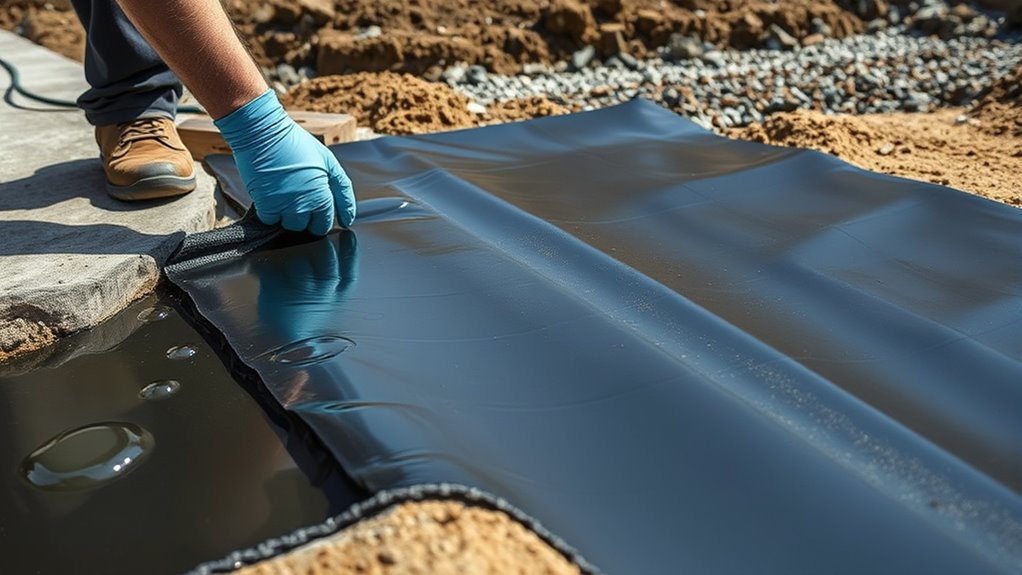
When selecting a waterproofing solution, it’s essential to evaluate the specific requirements of your project and the environment in which it will be installed. Consider the type of structure, whether it’s a basement, roof, or foundation, as each demands different materials. Think about exposure to water, temperature fluctuations, and UV radiation, which influence durability. Assess the soil conditions and moisture levels to determine the appropriate resistance levels. Budget constraints also matter; some solutions are more cost-effective but may require more maintenance. Additionally, check compatibility with existing materials and local building codes. Conducting a vetted assessment of your site can help identify potential risks and ensure you select the most suitable waterproofing membrane. By analyzing these factors, you can choose a waterproofing membrane that ensures long-lasting protection and meets your project’s unique needs effectively.
Installation Tips for Effective Waterproofing
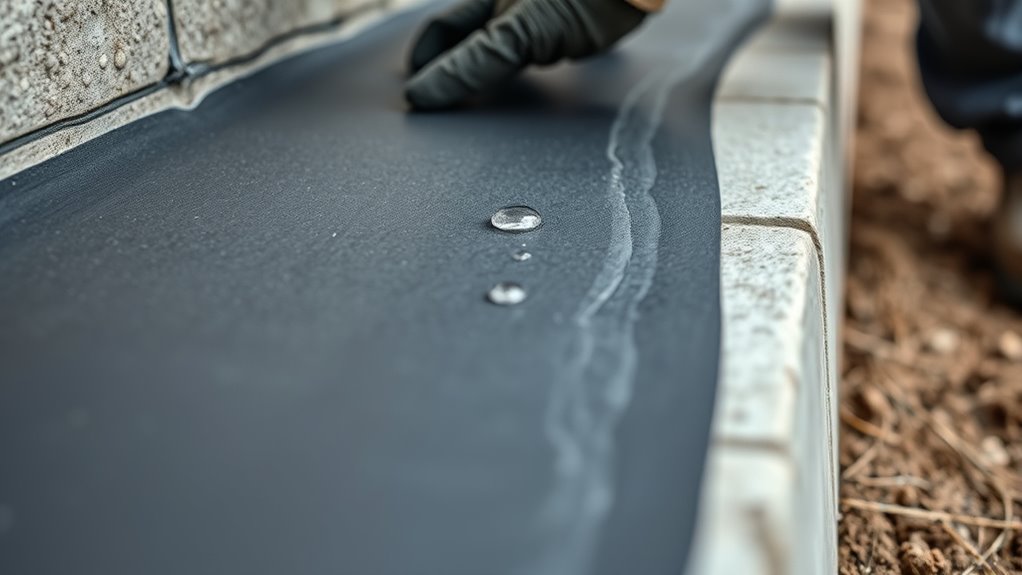
Proper installation is crucial to guarantee your waterproofing membrane performs effectively and lasts over time. Begin by preparing the surface thoroughly; it should be clean, dry, and free of debris or sharp edges. Follow the manufacturer’s instructions carefully, paying attention to application temperature and curing times. Confirm seams are properly overlapped and sealed to prevent leaks. Use appropriate tools to smooth out air bubbles and wrinkles, maintaining even adhesion. Pay close attention to corners, joints, and penetrations, applying additional sealant if necessary. Always perform a visual inspection after installation to identify any gaps or imperfections. Proper handling during installation minimizes damage to the membrane, ensuring its long-term effectiveness. Additionally, understanding the importance of material compatibility can prevent future issues and enhance the durability of your waterproofing system. Taking these steps helps you create a reliable barrier against water seepage.
Benefits of Investing in Quality Waterproofing Membranes
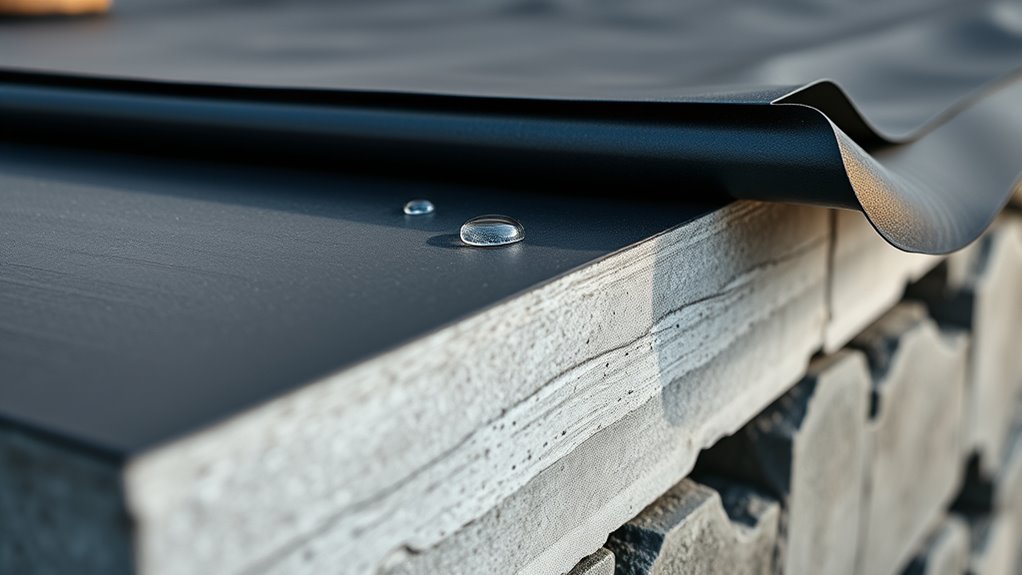
Investing in high-quality waterproofing membranes offers long-term savings by reducing maintenance costs and preventing costly water damage. By choosing superior materials, you guarantee your structure stays protected against leaks, mold, and structural deterioration. Quality membranes provide better durability, resisting UV rays, chemicals, and temperature fluctuations, extending their lifespan. This reliability minimizes frequent repairs and avoids unexpected expenses. Additionally, a well-installed membrane enhances property value and peace of mind, knowing your building is safeguarded. Here’s a quick comparison:
| Feature | Benefits |
|---|---|
| Durability | Lasts longer, withstands harsh conditions |
| Cost-effectiveness | Reduces frequent repairs and replacements |
| Protection against water damage | Prevents mold, structural issues, and decay |
Invest wisely now to safeguard your investment for years to come.
Frequently Asked Questions
How Long Do Waterproofing Membranes Typically Last?
Waterproofing membranes usually last between 10 and 30 years, depending on the material and installation quality. You can extend their lifespan by ensuring proper application, regular inspections, and addressing any damage promptly. Factors like exposure to UV rays, temperature fluctuations, and moisture can impact durability. By maintaining your membranes well, you’re better protected against seepage and costly repairs, ensuring your structure stays dry and secure for years to come.
Can Waterproofing Membranes Be Applied on Existing Structures?
Yes, you can apply waterproofing membranes on existing structures. First, make certain the surface is clean, dry, and free of debris. You might need to repair any cracks or damages before application. Use appropriate primers if required, and follow the manufacturer’s instructions for proper adhesion. With proper prep and the right membrane type, you can effectively waterproof existing buildings, preventing future seepage and damage.
Are There Eco-Friendly Waterproofing Membrane Options Available?
You’ll be pleased to know there are eco-friendly waterproofing membranes available that can help protect your structure while respecting the environment. These options often use sustainable materials like recycled polymers or natural substances, reducing your ecological footprint. By choosing environmentally conscious membranes, you not only prevent seepage effectively but also contribute to a greener future. It’s a win-win that lets you safeguard your property without compromising your values.
What Maintenance Is Required for Waterproofing Membranes?
You should regularly inspect your waterproofing membranes for signs of damage, such as cracks, tears, or blistering. Keep the surface clean and free of debris to prevent deterioration. Reapply or repair any damaged sections promptly to maintain effectiveness. Guarantee proper drainage around the area so water doesn’t pool. By staying proactive with routine checks and maintenance, you’ll extend the lifespan of your waterproofing system and keep moisture out.
How Do Weather Conditions Affect Waterproofing Membrane Installation?
Weather conditions critically impact waterproofing membrane installation. You should avoid installing membranes during rain, snow, or when temperatures are too cold or hot, as these can cause improper adhesion or damage. Humidity and moisture in the air can also compromise the seal. By choosing ideal weather conditions—dry, mild days—you ensure the membrane adheres properly, providing effective, long-lasting protection against water seepage.
Conclusion
So, why wait for your basement to turn into a swimming pool? With the right waterproofing membrane, you can keep water out and your sanity intact. Think of it as giving your property a super suit—ready to face the wettest days without a fuss. Invest wisely now, and you’ll never have to play the hero with a mop. After all, who needs a waterpark in their living room? Not you—thanks to smart waterproofing!
